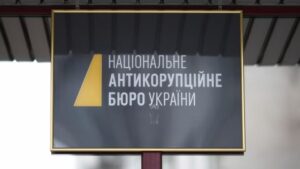
According to Serbian Economist, Serbian President Aleksandar Vučić confirmed that the NIS oil refinery in Pančevo has been switched to reduced circulation mode due to oil shortages caused by US sanctions and uncertainty surrounding the OFAC license.
Vucic said: “The plant has not been shut down yet, but has been put into circulation mode. This is a lower operating mode compared to normal.”
According to Vucic, without the extension of the OFAC special license allowing NIS to operate, the refinery will be completely shut down in about four days.
He also said that he had offered the government another 50 days to find a buyer for NIS, rather than nationalizing it.
According to NIS, the process is being carried out in accordance with Serbian law, internal regulations, and “strict environmental and safety standards.”
The plant will be maintained in a state ready to start up as soon as access to oil becomes available.
At the same time, NIS emphasizes that
fuel supplies to the domestic market in Serbia are currently running smoothly thanks to pre-formed reserves.
The company hopes for a speedy return to normal operations at the refinery, which is “important not only for Serbia but also for regional markets.”
It is noted separately that the shutdown of the refinery will also affect HIP Petrohemija, which will also begin preparations to halt production.
In early 2025, NIS, a subsidiary of Gazprom Neft, was added to the US SDN list. OFAC issued a special license until February 13, 2026, allowing shareholders to negotiate a change in ownership structure.
Last week, NIS submitted a new request to OFAC for a special license to ensure normal operations during the negotiation period.
Energy Minister Dubravka Jedovic-Handanovic said that the Russian owners had agreed to sell 56.15% of NIS to a third party, but the name of the potential buyer has not been disclosed – “negotiations are underway between serious companies.”
NIS is the only company in Serbia engaged in oil and gas exploration and production. It owns a large oil refinery in Pančevo, dominates the country’s petroleum products market, and has a network of more than 400 gas stations in Serbia, Bosnia and Herzegovina, Bulgaria, and Romania.
Since 2009, according to the company, more than €900 million has been invested in the modernization of the Pančevo refinery.
If the OFAC license is not renewed and oil supplies are not resumed, Serbia may be left without its own refining capacity and become more dependent on imports of finished petroleum products. Not only energy security but also the industrial chain (NIS + HIP Petrohemija) will be under threat.
A successful deal to withdraw Russian capital and bring in a third investor could preserve the refinery as a regional processing center and reduce the risk of sanctions.
For Serbian Economist, this is a key case for the coming weeks: the OFAC decision and the parties’ willingness to close the NIS deal will determine the state of the Balkan oil market as early as 2026.

Shares of biopharmaceutical company Enlivex Therapeutics, whose securities are traded on the Nasdaq exchange, rose after the announcement of its intention to raise $212 million to create a “digital treasury” based on the RAIN token, against which the value of the token itself increased by 115% over the past day.
Enlivex plans to conduct a private placement (PIPE), in which it will issue 212 million new shares at a price of $1 per share, which is 11.5% higher than last Friday’s closing price. The company intends to use all the funds raised to purchase RAIN tokens, while Enlivex will retain its core business profile in biopharmaceuticals.
The market reacted positively to the announcement: at the end of trading on Monday, Enlivex’s share price rose by about 13%, while the RAIN token rose by 115% over the past 24 hours, the publication notes.
RAIN is the native token of the decentralized prediction market on the Arbitrum blockchain, where users can bet on the outcome of real-world events — from elections to show business events — without intermediaries, using smart contracts for settlements and transparency.
Enlivex also announced that after the deal is completed, former Italian Prime Minister Matteo Renzi will join the company’s board of directors, which management expects will strengthen the issuer’s international position and increase investor confidence.
Enlivex’s interest in prediction markets coincides with the rapid growth of this segment after the 2024 elections: the Polymarket platform has attracted about $2 billion in investments from ICE, the parent company of the New York Stock Exchange, and Kalshi has attracted about $1 billion from Sequoia Capital and other investors, No Worries emphasizes, citing a statement by Enlivex CEO Chai Novik that institutional interest in leading prediction market players indicates the maturity of the industry and its potential.

Starting November 24, Ukraine’s largest chain of gas stations, UKRNAFTA, is launching a new round of fuel discounts, allowing customers to save up to 9 UAH per liter of gasoline when combining promotional offers, according to a company statement.
According to the press release, a basic discount of UAH 2/liter is provided when using the UKRNAFTA mobile app. Additionally, customers can receive:
a discount of 1 UAH/liter when refueling 20 liters or more and purchasing coffee;
a discount of 1 UAH/liter when refueling 20 liters or more and purchasing winter windshield washer fluid;
a discount of 1 UAH/liter when refueling 20 liters or more and purchasing a hot dog;
a discount of 2 UAH/liter when refueling 40 liters or more (a discount of 1 UAH/liter applies to volumes of 25–40 liters);
up to a discount of 2 UAH/liter – additional discounts from partners (Nova Poshta, Ukrzaliznytsia, YasnoLove, Vodafone).
The company specifies that when all promotions are combined, the total savings reach 9 UAH per liter of gasoline. In addition, when paying with a UKRSIBBANK World Elite card, the total savings on gasoline and diesel fuel can be up to 10 UAH/liter.
In addition to fuel discounts, until the end of November, the chain is running a promotion with a 50% discount on burgers and vitamin teas in cafes at UKRNAFTA gas stations.
JSC Ukrnafta is Ukraine’s largest oil production company and the operator of the largest national gas station chain, UKRNAFTA. In 2024, the company took over the management of Glusco’s assets. In 2025, it completed an agreement with Shell Overseas Investments BV to purchase the Shell network in Ukraine. In total, it operates 662 gas stations.
The company is implementing a comprehensive program to restore operations and upgrade the format of its network of gas stations. Since February 2023, it has been issuing its own fuel vouchers and NAFTAKarta cards, which are sold to legal entities and individuals through Ukrnafta-Postach LLC.
The largest shareholder of Ukrnafta is Naftogaz of Ukraine with a 50%+1 share.
In November 2022, the Supreme Commander-in-Chief of the Armed Forces of Ukraine decided to transfer the company’s corporate rights, which belonged to private owners, to the state, and they are now managed by the Ministry of Defense.

As of November 25, 2025, Ukrainian farmers have sown 6.429 million hectares of winter crops, or 98.1% of the projected production area, while on November 26 last year, 6.14 million hectares were sown.
According to data from the Ministry of Economy, Environment, and Agriculture published on its website, Ukrainian farmers have already sown 5.34 million hectares of winter grain crops, compared to 5.06 million hectares a year ago.
At the same time, 4.69 million hectares (4.38 million hectares) were sown with winter wheat, 586,100 hectares (611,100 hectares) with barley, and 66,300 hectares (68,600 hectares) with rye.
Chernivtsi and Cherkasy regions are among the leaders in grain crops. Grain sowing has already been completed in Dnipropetrovsk, Zaporizhzhia, Zakarpattia, Ivano-Frankivsk, Mykolaiv, Odesa, Poltava, Rivne, and Chernihiv regions, according to the report.
According to the report, as of November 25, rapeseed had been planted on an area of 1.084 million hectares (last year – 1.08 million hectares), which is 96.5% of the projected area. Farmers in all regions have virtually completed sowing.
The Ministry of Economy previously published forecast figures for the area sown with winter crops for the 2026 harvest. Ukrainian farmers are expected to reduce the area sown with winter crops by 5.1% to 5.368 million hectares. At the same time, the area under winter wheat will be reduced by 4.4% to 4.778 million hectares, winter barley by 2.7% to 576,100 hectares, and winter rapeseed by 5.5% to 1.114 million hectares. At the same time, winter rye crops will increase by 7.6% to 69.3 thousand hectares.

Corruption in the energy sector is systemic and long-standing. Since 2022, the National Anti-Corruption Bureau (NABU) and the Specialized Anti-Corruption Prosecutor’s Office (SAP) have been investigating five high-profile cases in the energy sector, according to anti-corruption authorities.
On Tuesday, NABU and SAP posted an infographic on criminal cases in the energy sector on their Telegram channel, which, in particular, highlights the Energoatom case with losses to the state of UAH 100 million, which is currently being considered in court, and the Ukrenergo case, with losses of UAH 600 million, which is also at the stage of judicial review.
In addition, the completion of the pre-trial investigation of the Kharkivoblenergo case, with losses to the state amounting to UAH 12.6 million, and the court’s consideration of the case of bribery by the Deputy Minister of Energy are mentioned, as well as the Energoatom case on kickbacks from contractors, which is still under investigation.
“Not just Midas: 5 high-profile cases of NABU and SAP in the energy sector since 2022,” the anti-corruption authorities said in a statement.
“The criminal organization that was exposed during Operation Midas is only part of a much bigger problem. Corruption in Ukraine’s energy sector is systemic and long-standing. NABU and SAP cases in this area cover various levels: from direct bribery in the ministry to large-scale market manipulation and theft of resources at state-owned enterprises,” NABU and SAP note.
The statement notes that anti-corruption agencies continue to consistently expose these crimes regardless of the political context or the names of those involved. “Cases are brought to court, and new challenges receive an immediate response. The work to clean up one of the most strategic and at the same time most corrupt industries will continue in the future,” NABU and SAP assure.

Irina Mikhalyova, marketing director of Alliance Novobud development company, took part in the Ukrainian Building Congress (UBC), which took place on November 21 at the Parkoviy ECC in Kiev, having acted as a speaker and moderator of two discussion panels dedicated to affordable housing and the state mortgage program “єOselia”.
According to the press service of Alliance Novobud, Mikhalyova moderated the panel “Affordable Housing: How to Make Real Estate Affordable for Ukrainians”, which was attended by representatives of development companies, banks and government institutions – in particular, EcoBud Building Group, Ukrfinjitlo, State Fund for Promotion of Youth Housing Construction, Sky Bank and developer Intergal-Bud. The participants discussed the combination of state programs, market instruments of developers and bank products to form an affordable housing market under war conditions.
Special emphasis was placed on the impact of the war on purchasing power, construction rates and financing of new projects. According to Mikhalyova, state support programs, such as “єOselia”, in wartime become not only a financial instrument for the market, but also an indicator of the state’s confidence in the industry. She noted that participation in such initiatives helps developers to stabilize sales and stimulate demand for primary real estate.
In addition, CMO Alliance Novobud was a speaker at the discussion panel “єOsela – the state’s investment in recovery”, where developers and bankers shared their experience of working with the program, assessed its impact on the sales structure and discussed the prospects of reconfiguring the loan product to primarily finance primary housing. Ms. Mikhalyova confirmed the company’s readiness to develop partnership formats with banks for additional support of buyers.
Alliance Novobud is a development company operating in the residential real estate market of Kyiv and Kyiv region for more than 18-20 years, specializing in business class projects in the capital and modern residential complexes in the suburbs. According to the company, under the brand Alliance Novobud projects are realized in Kiev (Montreal House, club house Illinsky House) and Brovary (in particular, Krona Park II, Madison Gardens, “Forest Quarter” and “Lavandovy”).
According to the rating of LUN service and NV edition, at the end of 2024 Alliance Novobud entered the top 20 largest developers of Kyiv and the region, taking 15th place by the number of commissioned apartments, which, according to analysts, indicates the stability of the company in the war conditions. Industry reviews indicate that since its establishment the developer has built more than two dozen residential buildings, and its projects are characterized by monolithic-frame construction technology and medium- and business-class positioning.